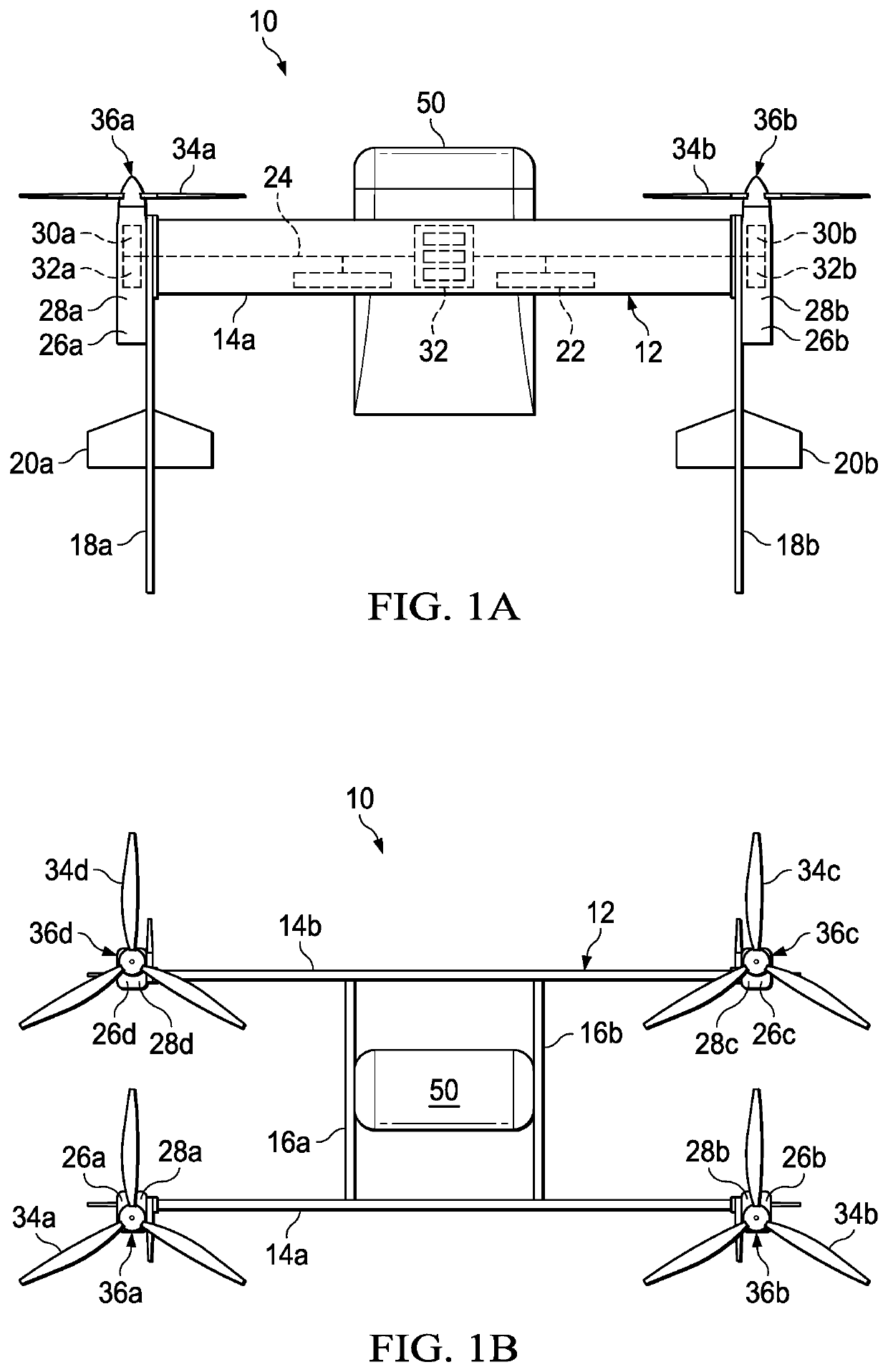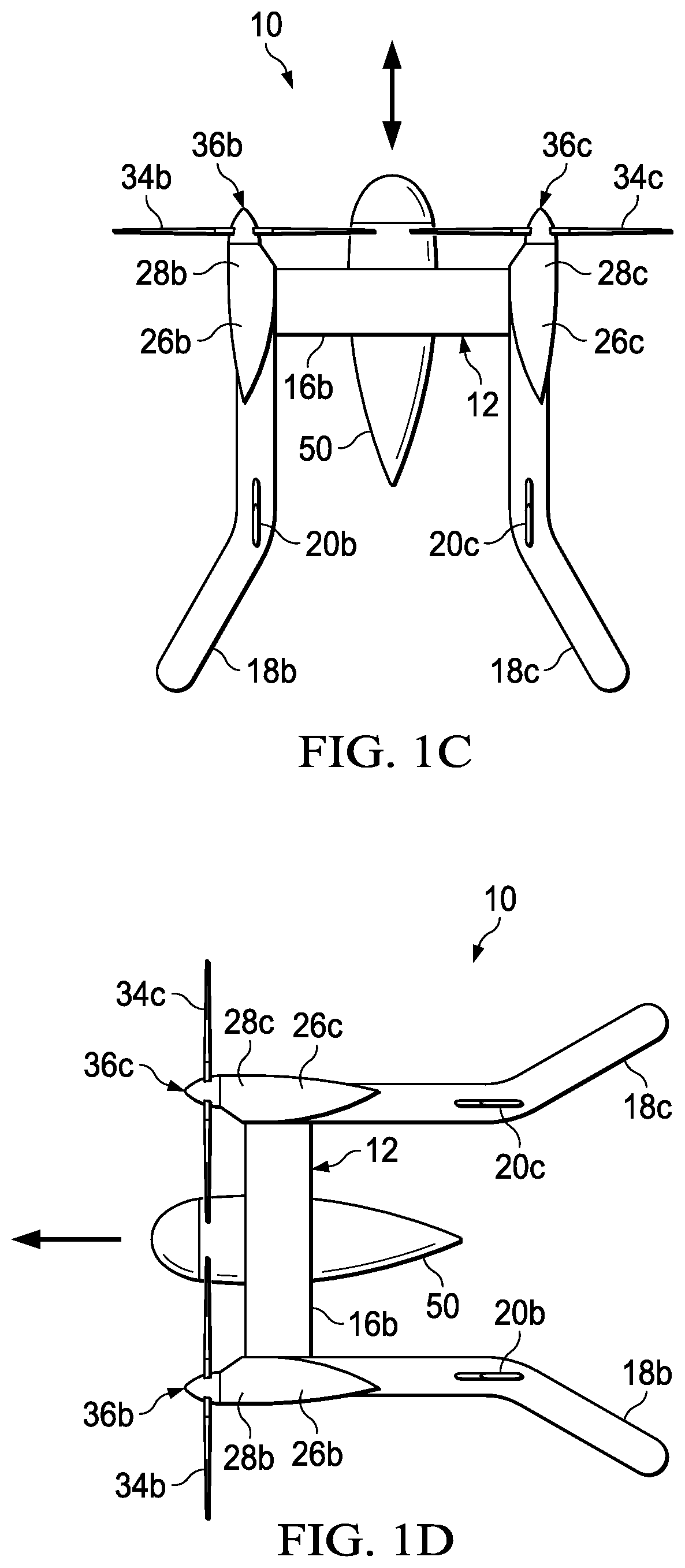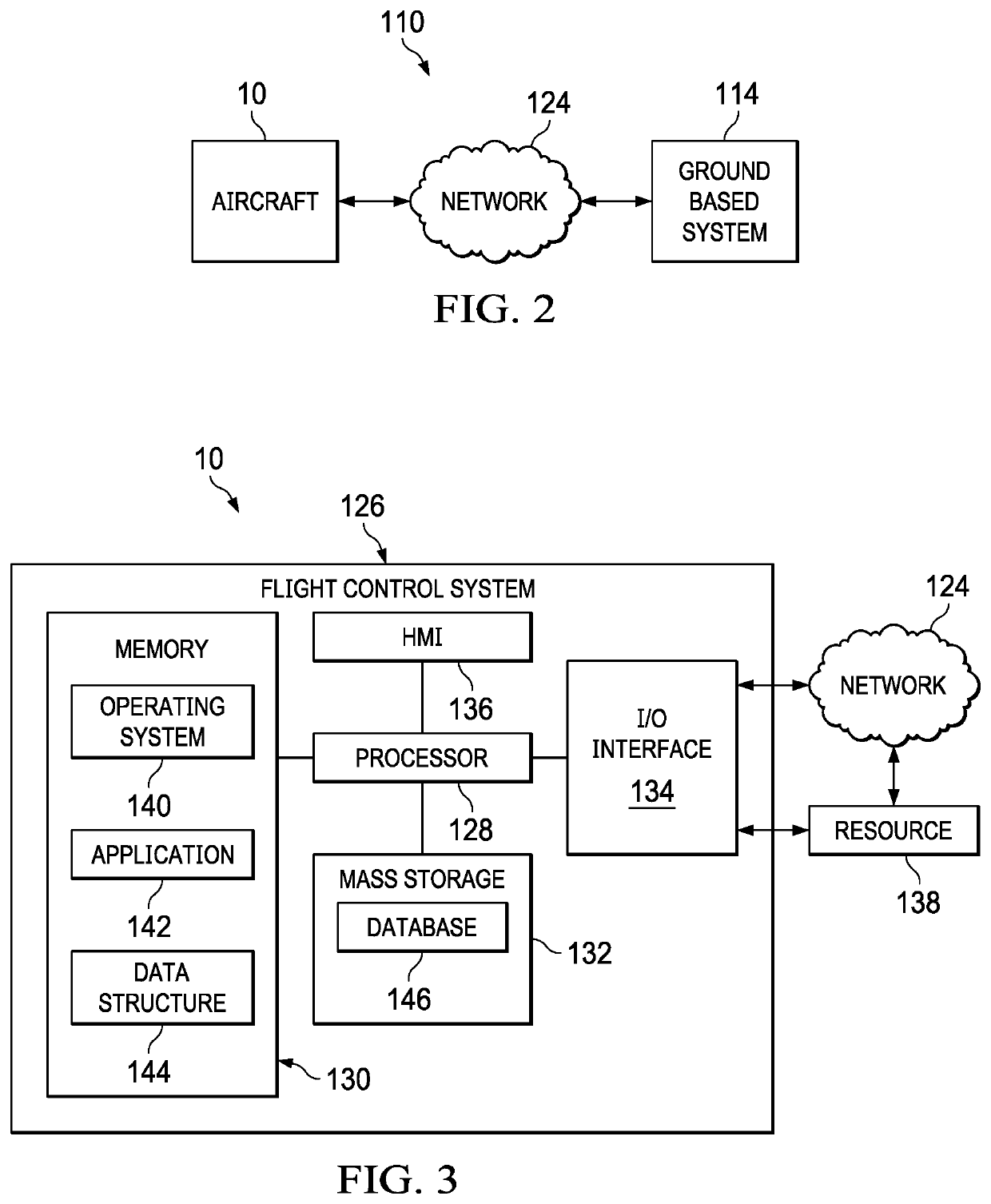Turn Into Wind Method and System
a technology of turning aircraft and wind, applied in vertical landing/take-off aircraft, process and machine control, instruments, etc., can solve the problems of rotorcraft lacking the forward airspeed of fixed-wing aircraft, and achieve the effect of reducing form drag, minimizing pitch angle, and reducing form drag on tailsitter aircra
- Summary
- Abstract
- Description
- Claims
- Application Information
AI Technical Summary
Benefits of technology
Problems solved by technology
Method used
Image
Examples
Embodiment Construction
[0023]I. First Exemplary Rotorcraft
[0024]FIGS. 1A-1D show an aircraft 10 that may be subclass of VTOL aircraft and also a subclass of fixed wing aircraft. FIGS. 1A and 1C depict aircraft 10 in thrust-borne flight which may also be referred to as the vertical takeoff and landing, VTOL flight mode, or a tailsitting orientation. FIGS. 1B and 1D depict aircraft 10 in wing-borne flight which may also be referred to as the forward / high-speed forward flight mode of aircraft 10 or a cruise orientation. Additional details of aircraft 10 are shown and described in U.S. Pub. No. 2020 / 0231297, entitled “Aircraft having Redundant Directional Control,” published on Jul. 23, 2020, the disclosure of which is incorporated by reference herein. Additional details are shown and described in U.S. Pat. No. 10,618,646, entitled “Rotor Assembly Having a Ball Joint for Thrust Vectoring Capabilities,” issued on Apr. 14, 2020, the disclosure of which is incorporated by reference herein.
[0025]In the illustrate...
PUM
 Login to View More
Login to View More Abstract
Description
Claims
Application Information
 Login to View More
Login to View More - R&D
- Intellectual Property
- Life Sciences
- Materials
- Tech Scout
- Unparalleled Data Quality
- Higher Quality Content
- 60% Fewer Hallucinations
Browse by: Latest US Patents, China's latest patents, Technical Efficacy Thesaurus, Application Domain, Technology Topic, Popular Technical Reports.
© 2025 PatSnap. All rights reserved.Legal|Privacy policy|Modern Slavery Act Transparency Statement|Sitemap|About US| Contact US: help@patsnap.com



